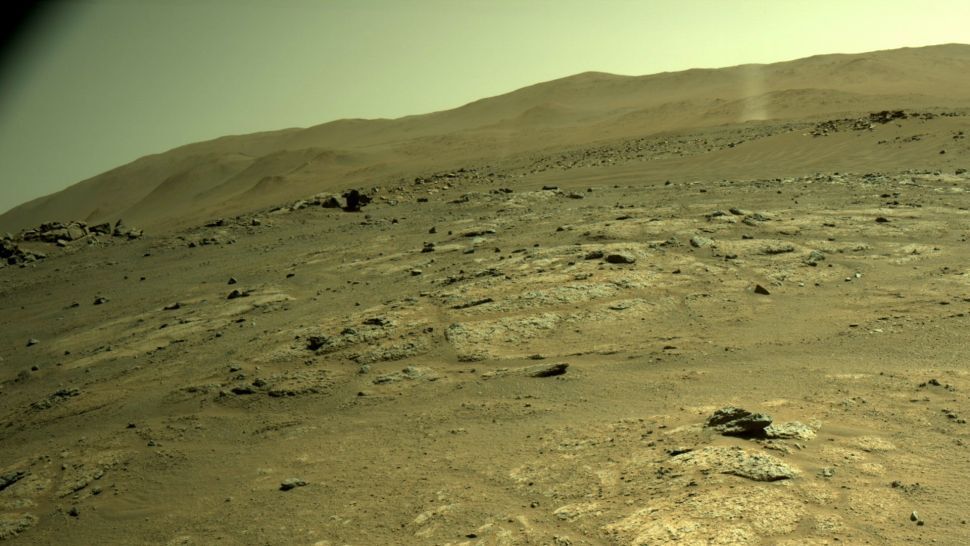23.12.2022
If wind power could prove useful on the Red Planet, it might play important roles that other forms of power do not.

An image of a dust devil in Jezero Crater taken by NASA's Mars rover Perseverance. (Image credit: NASA/JPL-Caltech)
Although the air on Mars is thin, winds there are strong enough to generate power that can support missions on the Red Planet, a new study finds.
The atmosphere on Mars is very thin compared to Earth's, possessing only about 1% the density, so the winds there only carry about 1% the force of our planet's. As such, researchers have long disregarded wind energy there as a viable source of energy for missions.
"The biggest challenges for wind energy on Mars is that even fast winds don't carry much force," Victoria Hartwick, a research scientist at NASA Ames Research Center in Mountain View, California, told Space.com.
However, recently scientists have focused on creating wind turbines that can operate in extreme locations and extract power even from slow winds. Both factors might prove useful in building wind turbines useful on Mars, Hartwick and her colleagues noted in a new study.
If wind power could prove useful on the Red Planet, it might play important roles that other forms of power do not. For instance, the amount of energy from solar power varies over the course of the day and seasons and across latitudes, and dust storms can prevent it from working. Although nuclear power can provide a continuous source of energy, it poses risks such as placing radioactive material near human habitats and long-term waste disposal.
After wind resource analyst Clara St. Martin described state-of-the-art modeling techniques used to discover prime areas for wind turbines on Earth, Hartwick and her colleagues wanted to see what might happen if they applied similar methods on global models of Martian climate.
The researchers found they "could comprehensively assess the wind power potential across the entire surface and throughout the entire Mars year," Hartwick said.
Hartwick and colleagues calculated the amount of power four different wind turbines might generate on Mars. These included commercial-scale machines such as the 300-kilowatt Enercon E3, which possesses a 100-foot-diameter (33-meter) rotor, and the five-kilowatt Aeolos V, which has a 15-foot-diameter (4.5-meter) rotor.
The researchers found that Martian wind power maximized at night, revealing it could help compensate for solar power. Wind power was also strong during global dust storms and during winter seasons in polar and middle latitudes, periods when solar power is weakest. "We were able to identify 13 broad regions with stable wind resources," Hartwick said.
The scientists discovered that out of 50 proposed Martian landing sites, wind speeds at 40 of the sites could supply at least some useful power. At three sites, wind speeds could generate 24 kilowatts — enough to support a six-crew team — for more than 35% of the year. At seven others, wind energy can supply more than 50% of total power needed either during winter months or dusty times. If wind power is needed only for scientific instruments, it could prove useful for another 30 sites.
All in all, when combined with solar arrays, wind turbines on Mars could increase the amount of time that power exceeds estimated missions requirements from about 40% for solar arrays alone to more than 60 to 90% when using wind power across a broad fraction of the Martian surface.
"This means some really scientifically interesting regions that might have previously been disregarded due to energy limitations might be accessible to human missions if wind turbines can be utilized," Hartwick said.
The scientists encourage future research to investigate wind turbines that might operate efficiently under Martian conditions and extract more power from Martian winds. "We really hope that many groups will use this research as a stepping off point for their own work," Hartwick said.
Quelle: space.com
